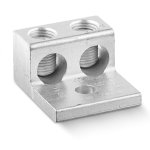JohnHess
Member
- Location
- North East US
- Occupation
- Electrical Contractor
It says that there needs to be one, but it doesn’t prohibit any other way of landing an EGC. Maybe it’s for making future installations easier if the installer wants to use the ground bar.The ground bar is required so that you can connect any wire type EGC's to it, it is not only there just to look at.
We have to install an intersystem bonding block on a service, but there’s nothing saying it has to be used. The utilities ground their systems in any way that they choose.



